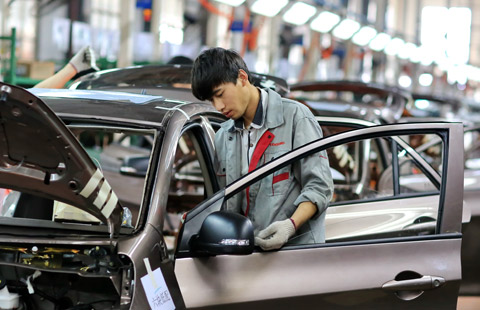Raw materials versus industry
The argument that the BRICS success story is over and all these countries face a similar fate (slowing economies and being overtaken by other, more competitive regions) ignores the fact that these nations have developed along remarkably different trajectories over the past 10 years.
The main difference is between the countries that have produced the resources (mainly Russia, Brazil and South Africa of the BRICS) and those that have used them (China and, to some extent, India). With the slowdown in growth in China and other parts of the world, it is the former countries that will face the stiffest challenge in maintaining growth because of the lack of domestic activity, whereas those that have built up domestic industry face a brighter future.
The lesson from the history of the last century's development provides two prominent examples of success: Japan and South Korea. These two countries followed similar models to China today - attracting significant inward investment, promoting technological upgrades, heavy protectionism of domestic manufacturing and service companies and a relatively closed currency and capital account.
As a result, they ended up with manufacturing enterprises that were competitive on an international scale, relatively advanced technologies, a skilled workforce and, as a result, economies that were in a better position to both create and benefit from global growth. (A key reason behind Japan's recent decline is a 4.5 percent decrease in its working population over the past 15 years, whereas South Korea has seen 25 percent growth in employees in the same period.)
By contrast, the other lesson from economic history is that countries that derive most of their activity or growth from basic industries, particularly extraction of valuable minerals or energy, tend to veer toward extremes. The ownership of the resources ends up in the hands of major companies or individuals, but the extraction or production of them does not require a skilled workforce, so huge wealth is created but not necessarily economic or industrial value.
Now, we are in a position where the major engine of global growth and, as a result, demand for commodities - China - is seeing a slowdown and rebalancing of its economy. As a result, the BRICS reliant on basic raw materials face the biggest problems.
Looking at the individual economies, the following can be said. The energy sector accounts for two-thirds of Russia's exports, 30 percent of GDP and half of government revenues. The fastest growth areas over the past decade outside energy have been financial services and real estate (14.4 percent and 6.9 percent average growth), whereas manufacturing, education and healthcare have all been below 2 percent. As a result, without oil to prop up growth, Russia's economic boom will fade.
Brazil relies heavily on agricultural and iron ore exports. The government is increasingly concerned about the manufacturing sector's ability to compete globally. The two biggest contributors to Gross Value-Added over the past decade have been agriculture and mining/quarrying (4.4 percent and 4.3 percent), whereas manufacturing and construction have been among the weakest (about 2 percent).
In South Africa, manufacturing accounts for just 15 percent of GDP, with commodity exports being the main contributor to the economy and financial services the second. South Africa faces the greatest challenge of the BRICS in sustaining growth because of potentially lower prices for key commodities and because it has the least well-developed industrial and workforce competency.
India does not fit this mold, nor does it compare easily with China. Its domestic economy is still heavily reliant on agriculture (which employs 50 percent of the workforce), but it has some of the largest and most successful international companies and, in certain areas, a highly skilled employee base. As a result, it has seen strong growth across all areas of construction (8 percent), manufacturing (7.3 percent), transport and communications (9.4 percent) and finance (11.4 percent), even while its basic industries have been weak.
The problems it faces in achieving its potential growth are similar to China's in that it needs substantial reform of its industrial and government infrastructure to achieve the next phase of growth.
China is in the enviable position of having a large and highly competitive industrial landscape (industry accounts for 40 percent of GDP) and a skilled workforce, although it faces the major challenge of changing from selling these goods internationally to selling them domestically.
However, China will undoubtedly see a slowdown from the former 8 to 10 percent growth rates, and potentially a major correction if policies to manage this rebalancing are not successful.
The author is head of research, NSBO China. The views do not necessarily reflect those of China Daily.

























